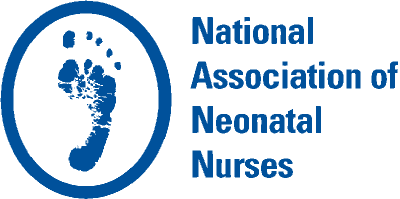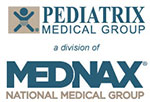Feature
Nursing-Sensitive Quality Indicators: What are They, and What do They Mean to the Bedside Nurse?
Lisa Smotrich, BSN RN CCRN
At the heart of the nursing profession is the goal of promoting health and wellness. Everything we do—direct patient care, patient and family education, advocacy, and an endless list of other activities—is done in order to advance this underlying goal. But how do we know if we are meeting that goal? How can we measure our progress, track change over time, and identify what areas most need our often limited resources?
Nursing-sensitive indicators (NSIs) are most commonly defined as patient outcomes that can be directly prevented or mitigated by the nursing care that is provided to the patient (Mangold & Pearson, 2017). Some examples of NSIs include patient falls, pressure injuries, and hospital-acquired infections. Just as surgery success rates can be used to evaluate the skill and quality of care provided by a surgeon, NSIs provide a way to measure and communicate the quality of nursing care provided by a unit or organization.
The NSIs that each organization focuses on will vary from unit to unit based on where its highest needs are. Within one hospital the neonatal intesive care unit might struggle with central line-associated bloodstream infections (CLABSI), while the medical floors are concerned about rising patient fall rates, and the adult ICU works to decrease pressure injuries. Identifying the specific needs of each unit provides valuable perspective on how to address a problem through targeted interventions. A sudden increase in CLABSI in multiple units within a single hospital might indicate a problem in the pharmacy, the manufacturer, or other areas as opposed to educational or process deficiencies.
NSIs also can include structural and process measures that directly relate to patient outcomes, such as patient ratios, nurse staffing levels, and staff turnover (Heslop & Lu, 2014). These measures are important to track because they have been shown to impact patient outcomes. In the NICU, understaffing has been correlated with increased infection rates in very low birth weight infants (Rogowski et. al., 2013) and an increased risk of bronchopulmonary dysplasia in infants born at less than 29 weeks gestational age or weighing less than 1,000 grams (Beltempo et. al., 2017).
NSIs ultimately are about patient harm. It means that patients—in our case, babies—are harmed in ways that potentially could have been prevented. As nurses, our goal is to heal, not to harm, but the unfortunate truth is that babies are harmed every day by nursing actions or inactions. This is a sobering fact, but it can also be empowering. Nurses have the power to prevent this harm, and the good news is, we already have many of the tools we need to do so!
There is strong evidence to support individual and bundled interventions (i.e. “bundles”) to prevent various NSIs. A bundle is a set of evidence-based interventions which, when consistently implemented together, have been demonstrated to prevent or minimize the occurrence of patient harm events (Institute for Healthcare Improvement, 2018). Introduced as a concept by the Institute for Healthcare Improvement, bundled interventions are proven to be more effective than tackling individual elements.
An effective bundle is performed for a specific indication, in a specific way, at a specific time, and with a specific frequency. Deviation from the indications or procedures of a bundle may decrease its effectiveness or have unintended consequences. For example, one study examined whether a ventilator-associated pneumonia bundle that was effective for adult patients would be effective in the neonatal population (Weber, 2016). Investigators noted that adult VAP bundles included oral care practices that were not applicable or potentially harmful to neonates, so they were replaced with evidence-based neonatal oral care practices. Further research demonstrated that the adapted VAP bundle was effective in decreasing NICU VAP rates at the study site.
Implementation of new bundles or guidelines should involve an interdisciplinary team that includes front-line nursing staff. Involving the bedside nurse in the planning process will help ensure that the interventions selected are appropriate, feasible, and can build enthusiasm and buy-in for the change among nursing professionals. Skepticism and resistance to change are frequent barriers to implementing evidence-based practice, so anticipating staff concerns and addressing them proactively will greatly improve the odds that a bundle will be implemented successfully (Melnyk & Fineout-Overholt, 2015). If changes are being implemented in your unit and you don’t know why, ask! Even if you are not a part of the project team, you can still play a vital role as an early adopter and advocate for the new process.
After the bundle has been implemented, continually monitoring NSI rates will provide important feedback about the effectiveness of the bundle. Seeing a drop in NSI rates after implementation will help you and your team maintain continued bundle compliance as well as build confidence in the change process. Additionally, make sure results are communicated in a meaningful way. Not everyone is excited about numbers, so telling your team that the CLABSI rate at one hospital dropped from more than 6 per 1000 patient line days to 0.4 may not be effective. However, hearing that the CLABSI rate at that hospital dropped by 92% which resulted in a cost savings over $300,000, a 27% reduction in central line days, and 84 fewer days in the hospital is a powerful demonstration of the impact nurses have on the health and safety of their patients (Ceballos et. al., 2013).
Do you know what NSIs currently are in focus in your unit and what methods are being used to decrease their frequency? If you do, congratulations! My challenge to you is to pose the same question to two of your coworkers and help them find the answer if they don’t know. If you aren’t sure, then your challenge is to go find out. Ask your coworkers, your manager, or your director. Find out what your unit is doing to decrease the frequency of these events and how you can get involved! Be sure to share your success stories through conferences, blogs, and publications.
References
Beltempo, M., Lacroix, G., Cabot, M., Blais, R., & Piedboeuf, B. (2017). Association of nursing overtime, nurse staffing, and unit occupancy with medical incidents and outcomes of very preterm infants. Journal of Perinatology, doi:10.1038/jp.2017.146.
Ceballos, K., Waterman, K., Hulett, T., & Makic, M. B. F. (2013). Nurse-driven quality improvement interventions to reduce hospital-acquired infection in the NICU. Advances in Neonatal Care, 13(3), 154–163.
Heslop, L. & Lu, S. (2014). Nursing-sensitive indicators: A concept analysis. Journal of Advanced Nursing, 70(11), 2469–2482.
Institute for Healthcare Improvement (2018). Evidence-Based Care Bundles. Retrieved from http://www.ihi.org/Topics/Bundles/Pages/default.aspx
Mangold, K. & Pearson, J. (2017). Making sense of nursing-sensitive quality indicators. Journal for Nurses in Professional Development, 33(3), 159–160.
Melnyk, B. M. & Fineout-Overholt, E. (2015). Evidence-based practice in nursing & healthcare: A guide to best practice (3rd ed.). Philadelphia: Walters Kluwer Health.
Rogowski, J. A., Staiger, D., Patrick, T., Horbar, J., Kenny, M., & Lake, E. T. (2013). Nurse staffing and NICU infection rates. JAMA Pediatrics, 167(5), 444–450.
Weber C. (2016). Applying adult ventilator-associated pneumonia bundle evidence to the ventilated neonate. Advances in Neonatal Care, 16(3), 178–190.


